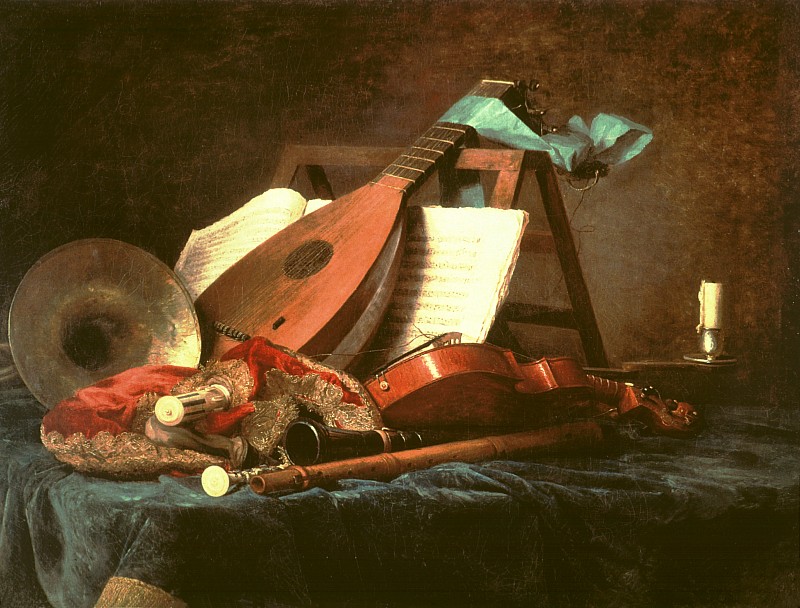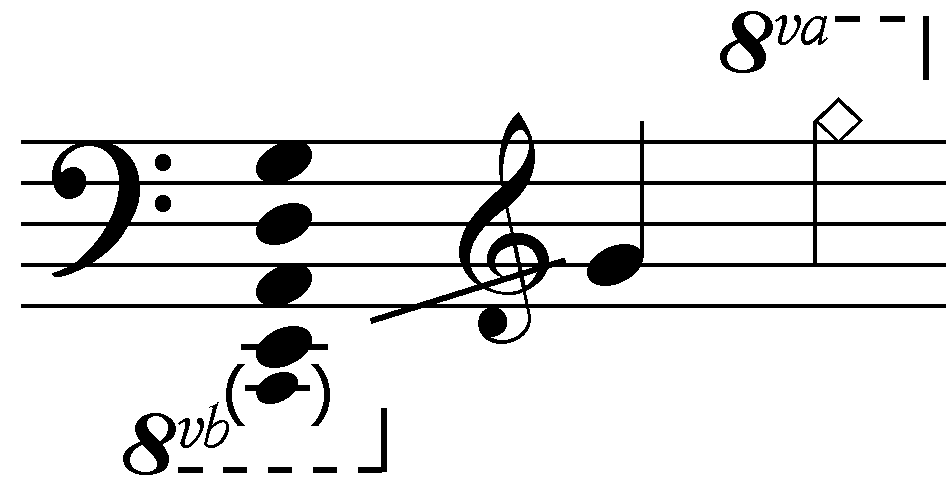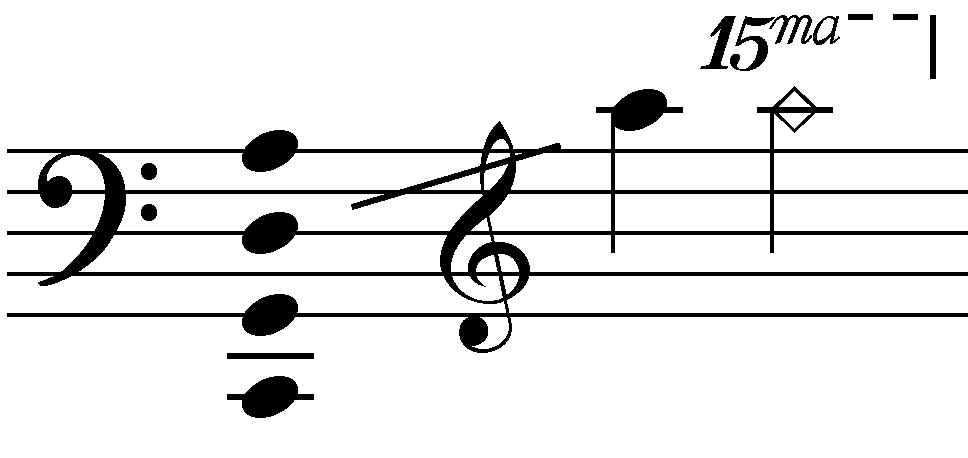|
Violin Family
The violin family of musical instruments was developed in Italy in the 16th century. At the time the name of this family of instruments was viole da braccio which was used to distinguish them from the viol family (viole ''da gamba''). The standard modern violin family consists of the violin, viola, cello, and (possibly) double bass. Instrument names in the violin family are all derived from the root ''viola'', which is a derivative of the Medieval Latin word ''vitula'' (meaning "stringed instrument"). A ''violin'' is a "little viola", a ''violone'' is a "big viola" or a bass violin, and a ''violoncello'' (often abbreviated ''cello'') is a "small violone" (or literally, a "small big viola"). (The ''violone'' is not part of the modern violin family; its place is taken by the modern double bass, an instrument with a mix of violin and viol characteristics.) Background The instruments of the violin family may be descended in part from the lira da braccio and the medieval Byzantine ... [...More Info...] [...Related Items...] OR: [Wikipedia] [Google] [Baidu] |
Musical Instrument
A musical instrument is a device created or adapted to make musical sounds. In principle, any object that produces sound can be considered a musical instrument—it is through purpose that the object becomes a musical instrument. A person who plays a musical instrument is known as an instrumentalist. The history of musical instruments dates to the beginnings of human culture. Early musical instruments may have been used for rituals, such as a horn to signal success on the hunt, or a drum in a religious ceremony. Cultures eventually developed composition and performance of melodies for entertainment. Musical instruments evolved in step with changing applications and technologies. The date and origin of the first device considered a musical instrument is disputed. The oldest object that some scholars refer to as a musical instrument, a simple flute, dates back as far as 50,000 - 60,000 years. Some consensus dates early flutes to about 40,000 years ago. However, most historians be ... [...More Info...] [...Related Items...] OR: [Wikipedia] [Google] [Baidu] |
Bratsche
Bratsch may refer to: *Gampel-Bratsch, municipality in the district of Leuk in the canton of Valais in Switzerland **Bratsch, village in Gampel-Bratsch in the district of Leuk of the canton of Valais in Switzerland *Bratsch (band), French-based music ensemble using various influences *Czech version of the balkan tambura See also *Bratsche, German for viola, from the Italian "viola da braccio" *Bratschen ''Bratschen'' are weathering products that occur as a result of frost and aeolian corrasion almost exclusively on the calc-schists of the Upper Slate Mantle (''Obere Schieferhülle'') in the High Tauern mountains of Austria. The term is German b ..., a German term, weathering products that occur as a result of frost and aeolian corrasion almost exclusively on the calc-schists of the Upper Slate Mantle (Obere Schieferhülle) in the High Tauern mountains of Austria * Hinterer Bratschenkopf, mountain in the Glockner Group on the Fusch-Kaprun ridge (Fuscher / Kapruner Kamm) in the Hi ... [...More Info...] [...Related Items...] OR: [Wikipedia] [Google] [Baidu] |
String Instrument
String instruments, stringed instruments, or chordophones are musical instruments that produce sound from vibrating strings when a performer plays or sounds the strings in some manner. Musicians play some string instruments by plucking the strings with their fingers or a plectrum—and others by hitting the strings with a light wooden hammer or by rubbing the strings with a bow. In some keyboard instruments, such as the harpsichord, the musician presses a key that plucks the string. Other musical instruments generate sound by striking the string. With bowed instruments, the player pulls a rosined horsehair bow across the strings, causing them to vibrate. With a hurdy-gurdy, the musician cranks a wheel whose rosined edge touches the strings. Bowed instruments include the string section instruments of the orchestra in Western classical music (violin, viola, cello and double bass) and a number of other instruments (e.g., viols and gambas used in early music from the Baro ... [...More Info...] [...Related Items...] OR: [Wikipedia] [Google] [Baidu] |
Bass Bar
In a string instrument, the bass bar is a brace running from the foot of the neck to a position under the bridge, which bears much of the tension of the strings. Bass bars are used: * In the members of the violin family; * In the members of the viola da gamba family; * In some archtop guitars; and in many other string instruments. According to the ''A Dictionary of Music and Musicians'' by George Grove:David, Paul. "Bass-bar", ''A Dictionary of Music and Musicians''. George Grove Sir George Grove (13 August 182028 May 1900) was an English engineer and writer on music, known as the founding editor of ''Grove's Dictionary of Music and Musicians''. Grove was trained as a civil engineer, and successful in that profession, b ..., ed. References String instrument construction {{Composite-instrument-stub ... [...More Info...] [...Related Items...] OR: [Wikipedia] [Google] [Baidu] |
Sound Post
In a string instrument, the sound post or soundpost is a dowel inside the instrument under the treble end of the bridge, spanning the space between the top and back plates and held in place by friction. It serves as a structural support for an archtop instrument, transfers sound from the top plate to the back plate and alters the tone of the instrument by changing the vibrational modes of the plates. The sound post is sometimes referred to as the ''âme'', a French word meaning "soul". The bow has also been referred to as the soul of these instruments. The Italians use the same term, ''anima'', for this.David D. Boyden. "Ame", ''Grove Music Online'', ed. L. Macy (accessed May 20, 2006)grovemusic.com(subscription access). Sound posts are used: * In all members of the violin family * In some members of the viol family * In some archtop guitars * In other string instruments Sound post adjustment The position of the sound post inside a violin is critical, and moving it by very small ... [...More Info...] [...Related Items...] OR: [Wikipedia] [Google] [Baidu] |
Correlation Does Not Imply Causation
The phrase "correlation does not imply causation" refers to the inability to legitimately deduce a cause-and-effect relationship between two events or variables solely on the basis of an observed association or correlation between them. The idea that "correlation implies causation" is an example of a questionable-cause logical fallacy, in which two events occurring together are taken to have established a cause-and-effect relationship. This fallacy is also known by the Latin phrase ''cum hoc ergo propter hoc'' ('with this, therefore because of this'). This differs from the fallacy known as ''post hoc ergo propter hoc'' ("after this, therefore because of this"), in which an event following another is seen as a necessary consequence of the former event, and from conflation, the errant merging of two events, ideas, databases, etc., into one. As with any logical fallacy, identifying that the reasoning behind an argument is flawed does not necessarily imply that the resulting con ... [...More Info...] [...Related Items...] OR: [Wikipedia] [Google] [Baidu] |
Byzantine Lira
The Byzantine lyra or lira ( gr, λύρα) was a medieval bowed string musical instrument in the Byzantine (Eastern Roman) Empire. In its popular form, the lyra was a pear-shaped instrument with three to five strings, held upright and played by stopping the strings from the side with fingernails. The first known depiction of the instrument is on a Byzantine ivory casket (900–1100 AD), preserved in the Bargello in Florence (''Museo Nazionale, Florence, Coll. Carrand, No.26''). Versions of the Byzantine lyra are still played throughout the former lands of the Byzantine Empire: Greece ( Politiki lyra, lit. "lyra of the City" i.e. Constantinople), Crete (Cretan lyra), Albania, Montenegro, Serbia, Bulgaria, North Macedonia, Croatia ( Dalmatian Lijerica), Italy ( Calabrian lira) and Armenia. History The most likely origin is the pear-shaped pandura, however with the introduction of a bow. The first recorded reference to the bowed lyra was in the 9th century by the Persian geograp ... [...More Info...] [...Related Items...] OR: [Wikipedia] [Google] [Baidu] |
Lira Da Braccio
The lira da braccio (or ''lyra de bracio''Michael Praetorius. Syntagma Musicum Theatrum Instrumentorum seu Sciagraphia Wolfenbüttel 1620) was a European bowed string instrument of the Renaissance. It was used by Italian poet-musicians in court in the 15th and 16th centuries to accompany their improvised recitations of lyric and narrative poetry.Howard Mayer Brown and Sterling Scott Jones. "Lira da braccio", '' Grove Music Online'', ed. L. Macy (accessed November 11, 2006)grovemusic.com (subscription access) It is most closely related to the medieval fiddle, or vielle, and like the vielle had a leaf-shaped pegbox with frontal pegs. Fiddles with drone strings are seen beginning in the 9th century (Byzantine lyra), and the instrument continued to develop through the 16th century. In many depictions of the instrument, it is being played by mythological characters, frequently members of angel consorts, and most often by Orpheus and Apollo. The ''lira da braccio'' was occasionally used ... [...More Info...] [...Related Items...] OR: [Wikipedia] [Google] [Baidu] |
Three Bow Frogs
3 is a number, numeral, and glyph. 3, three, or III may also refer to: * AD 3, the third year of the AD era * 3 BC, the third year before the AD era * March, the third month Books * ''Three of Them'' (Russian: ', literally, "three"), a 1901 novel by Maksim Gorky * ''Three'', a 1946 novel by William Sansom * ''Three'', a 1970 novel by Sylvia Ashton-Warner * ''Three'' (novel), a 2003 suspense novel by Ted Dekker * ''Three'' (comics), a graphic novel by Kieron Gillen. * ''3'', a 2004 novel by Julie Hilden * ''Three'', a collection of three plays by Lillian Hellman * ''Three By Flannery O'Connor'', collection Flannery O'Connor bibliography Brands * 3 (telecommunications), a global telecommunications brand ** 3Arena, indoor amphitheatre in Ireland operating with the "3" brand ** 3 Hong Kong, telecommunications company operating in Hong Kong ** Three Australia, Australian telecommunications company ** Three Ireland, Irish telecommunications company ** Three UK, British telec ... [...More Info...] [...Related Items...] OR: [Wikipedia] [Google] [Baidu] |
Double Bass
The double bass (), also known simply as the bass () (or #Terminology, by other names), is the largest and lowest-pitched Bow (music), bowed (or plucked) string instrument in the modern orchestra, symphony orchestra (excluding unorthodox additions such as the octobass). Similar in structure to the cello, it has four, although occasionally five, strings. The bass is a standard member of the orchestra's string section, along with violins, viola, and cello, ''The Orchestra: A User's Manual'' , Andrew Hugill with the Philharmonia Orchestra as well as the concert band, and is featured in Double bass concerto, concertos, solo, and chamber music in European classical music, Western classical music.Alfred Planyavsky [...More Info...] [...Related Items...] OR: [Wikipedia] [Google] [Baidu] |
Cello
The cello ( ; plural ''celli'' or ''cellos'') or violoncello ( ; ) is a Bow (music), bowed (sometimes pizzicato, plucked and occasionally col legno, hit) string instrument of the violin family. Its four strings are usually intonation (music), tuned in perfect fifths: from low to high, scientific pitch notation, C2, G2, D3 and A3. The viola's four strings are each an octave higher. Music for the cello is generally written in the bass clef, with tenor clef, and treble clef used for higher-range passages. Played by a ''List of cellists, cellist'' or ''violoncellist'', it enjoys a large solo repertoire Cello sonata, with and List of solo cello pieces, without accompaniment, as well as numerous cello concerto, concerti. As a solo instrument, the cello uses its whole range, from bassline, bass to soprano, and in chamber music such as string quartets and the orchestra's string section, it often plays the bass part, where it may be reinforced an octave lower by the double basses. Figure ... [...More Info...] [...Related Items...] OR: [Wikipedia] [Google] [Baidu] |
Viola
The viola ( , also , ) is a string instrument that is bow (music), bowed, plucked, or played with varying techniques. Slightly larger than a violin, it has a lower and deeper sound. Since the 18th century, it has been the middle or alto voice of the violin family, between the violin (which is tuned a perfect fifth above) and the cello (which is tuned an octave below). The strings from low to high are typically tuned to scientific pitch notation, C3, G3, D4, and A4. In the past, the viola varied in size and style, as did its names. The word viola originates from the Italian language. The Italians often used the term viola da braccio meaning literally: 'of the arm'. "Brazzo" was another Italian word for the viola, which the Germans adopted as ''Bratsche''. The French had their own names: ''cinquiesme'' was a small viola, ''haute contre'' was a large viola, and ''taile'' was a tenor. Today, the French use the term ''alto'', a reference to its range. The viola was popular in the heyd ... [...More Info...] [...Related Items...] OR: [Wikipedia] [Google] [Baidu] |








